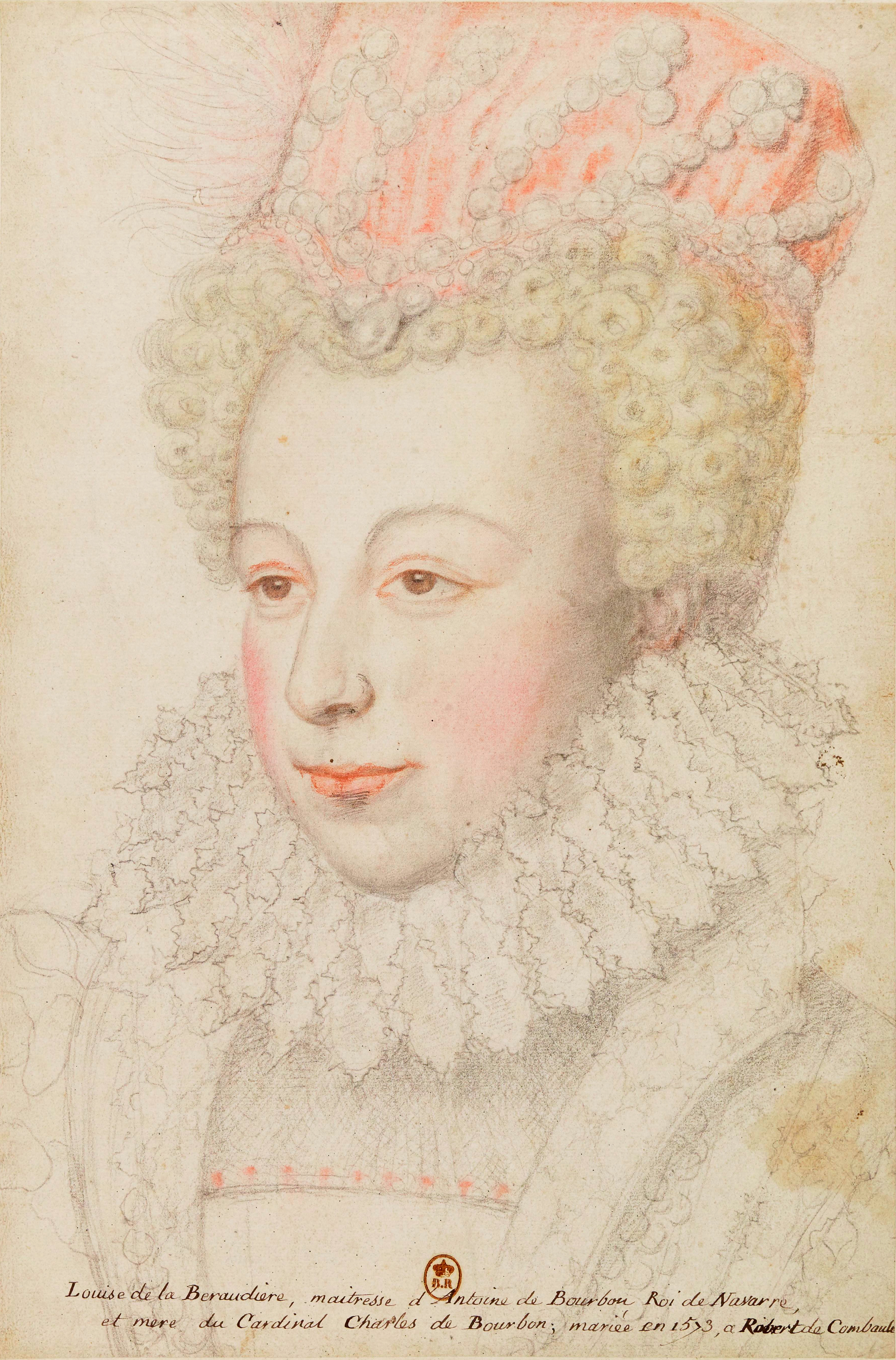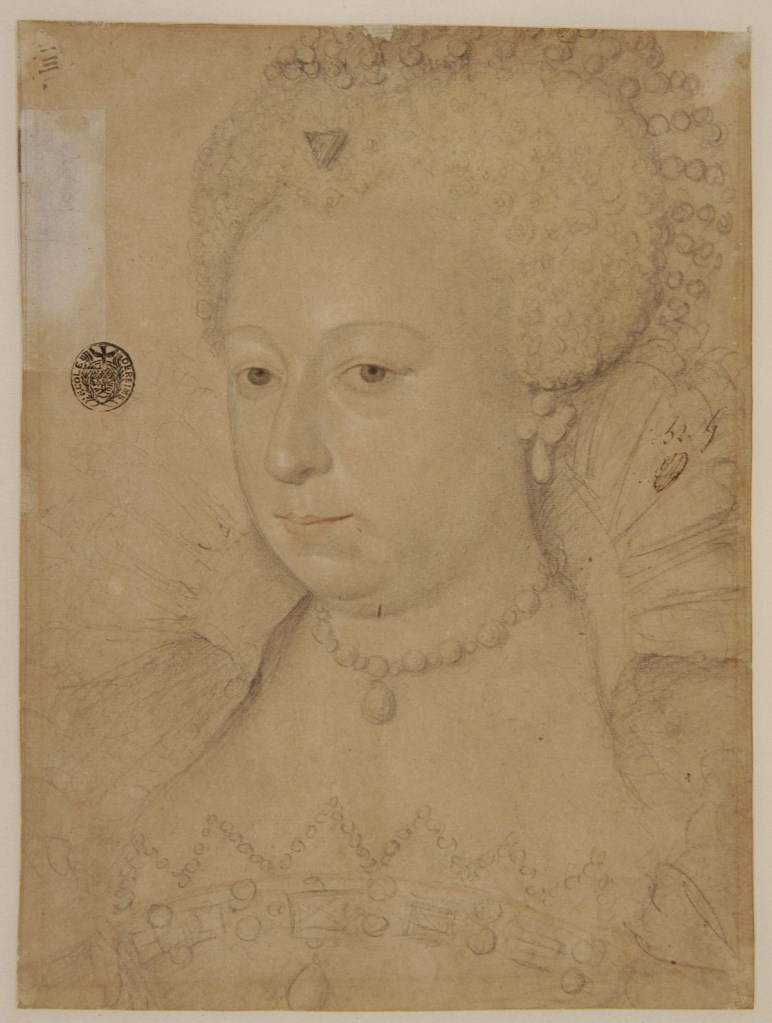Lover in 1580-1583.
French nobleman.
Marquis de Breval (by marriage)
Seigneur de Champvallon
Son of Louis II de Harlay, Seigneur de Champvallon & Louise de Carre, Dame de Saint-Quentin.
Husband of Catherine de La Marck Arenberg, Dame de Breval (1548-1585), mar 1582
Marguerite's illegitimate child with Champvallon?.
"We have made haste to arrive at the scandal which accompanied the departure of the Queen of Navarre, when she quitted Paris and the court, at the order of the King her brother, to return to Gascony, to the side of her husband. Henri III was very irritated against her, for the liaison of the Princess with Champvallon had borne its fruits and a child who, it was said, had resulted from this liaison, had disappeared immediately after its birth. Champvalon was prudently retired to Germany, when the pregnancy of Marguerite began to be suspected. It was reported that the adulterous infant had been smothered, cut into bits and hurled into a privy; but it was learned later that he had been reared under the name of Louis de Vaux by the concierge of the Hotel de Navarre, and that he was looked upon as being the son of a court-perfumer. However this may be, Henri III, having commanded his sister to depart, the latter regretfully obeyed and entered upon the journey on Monday, the 23rd of August 1583, with certain persons of her household. She arrived by evening at Palaiseau, to sleep there; but the King had caused her to be followed by sixty archers of his guard, and there captured. The Sieur de l'Archant, executing secret orders, 'came to seek her even in her bed, says Pierre de l'Estoile, 'and to take prisoners the lady of Duras and the damoiselle of Bethune, who were accused of incontinence and abortions.' The Seigneur of Lodon, gentleman of the Queen of Navarre, was arrested as well as the squire, the secretary, the physician and other officers of this Princess; they were led to Montargis, where the King himself interrogated them 'on the deportment of the said Queen, his sister, also upon the child which it was rumored she had had since her coming to the court.' But this interrogation and the inquiry which was the result of it brought nothing to light, and all those who were arrested were given their liberty. Marguerite was then free to continue her journey to Nerac, where her husband was. There were not longer any relations between the Queen and her husband, who lived together under the same roof as though they were already separated by a divorce. . . ." (History of prostitution among all the peoples of the world: 394)
"The Queen had certainly need to placate her husband at this period, since she had fallen desperately in love with Monsieur's grand equerry, Jacques de Harlay, Seigneur de Chanvallon (sic), one of the handsomest men of his time, and had acted with such singular indiscretion that her Majesty and M. de Chanvallon had been detected in a most compromising situation. After her gallant returned to his master to Paris, we find the enamoured princess writing to him. . . . " (The Last Loves of Henri of Navarre: 8)
" . . . The life which the imprudent Marguerite was leading rendered a scrutiny into her conduct peculiarly undesirable. The marquis de Chanvallon, who had been dismissed from the household of the duc d'Anjou for his indiscreet revelation of some trivial secret concerning his royal master to his friends in Paris, had been taken by Marguerite into her service, and resided with the queen in her hotel de la Couture Ste. Catherine. The familiarity of their intercourse soon excited public scandal: reports the most blasting to the fame of the queen of Navarre became current; until at length it was affirmed that during the preceding months of June or July queen Marguerite had given birth to a male child, of which Chanvallon was the father. This accusation is too strongly confirmed by proofs to admit of a doubt as to its accuracy; yet so lost was Marguerite to a sense of her degradation and the foul stain that she had inflicted on her illustrious name, that the orgies of the hotel Ste. Catherine continued with unabated profligacy. The letters written at this period by Marguerite and her paramour Chanvallon were preserved by some officious hand, and now remain a memorial against her in the archives of the Bibliotheque Imperiale. . . ." (Henry III King of France and Poland: 336)
"After an illness in 1582, Queen Margaret returned to the court of her brother, Henry III, in Paris. Her brother was soon scandalized by her reputation and behavior, and forced her to leave the court, even claiming that she had borne a bastard child by Jacques de Harlay. After long negotiations, she was allowed to return to her husband's court in Navarre, but she received an icy reception." (IPFS)
The love story of Marguerite & Champvallon.
"The signing of Fleix's Peace is at the origin of a gallant adventure that was to overthrow the life of Margaret and divide, once again, the royal family.
Among the young lords who accompany the Duke of Anjou, is a very attractive boy named Jacques du Harlay, lord of Champvallon, friend of Alençon that the Queen of Navarre, always on the lookout, immediately notice for his eyes warm and promising.
She is then thirty years old. Its already volcanic temperament is reinforced by the highly spicy Nérac cuisine. The sight of this handsome young man immediately set fire to all the good places, and she was embarrassed. Of a great beauty, literate, he has everything to please, he speaks to him of love ... Seeing his trouble, Champvallon knows how to be a gallant gentleman, and takes it on the spot ...
The next day, still tottering, she wrote to her friend, the Duchess of Uzès, her impressions of the few moments spent with this new partner: " I had so much pleasure that it would be too long a thing to write to you. " So much pleasure that she is moved to the very depths of herself; so much fun that, for the first time in her life, she really falls in love ...
Transfigured, radiant, forgetting everything: Navarre, Turenne, etc. She lives in the adoration of this young elegant lord whom she calls, with some exaltation, "her beautiful sun", "her beautiful angel", "her beautiful miracle". This passion blinds her to the point where she loses the little reserve she has, and Champvallon must satisfy her on the stairs, the cupboards, the gardens, the fields, the barns ...
François, the duke of Anjou fell in love with '' la belle Fosseuse '', and Henri de Navarre fears that the girl, whose ambition he knows, can not be seduced by the heir apparent to the throne of France
And François - to forget Fosseuse - leaves Nérac, taking his faithful Champvallon ...!
Marguerite's passion for Chamvallon grows and all her letters end in the same way: " I live only in you, my beautiful everything, my only and perfect beauty. I kiss a million times this beautiful hair, my dear and sweet goods; I fuck a million times this beautiful and loving mouth. ' "
After the departure of the Duke of Anjou, Henry of Navarre saw a new honeymoon with the beautiful Fosseuse he almost lost. It is then that a very laudable idea germinates in the mind of this small ambitious: she thinks that if she has a son of Navarre, it will repudiate Marguerite, to marry her, she ... Evenings during she works conscientiously for this purpose and, one morning, can announce to the Béarnais that she is pregnant with her good care." (Il Etait Une Fois . . . Le Feminin)
" . . . But her return to Paris did allow Marguerite to renew her relationship with Champvallon in December 1582. (Her fourteen letters to him date from their eighteen-month separation.) Marguerite was remarkably indiscreet about her sentiments for Champvallon, and she made it entirely too obvious that she considered him the love of her life. According to her lyrical letters, he embedded the Platonic ideas of goodness, truth, and beauty. She described her relationship with him as analogous to that of the Italian humanist Petrarch for the idealized Laura. . . ." (Queens and Mistresses of Renaissance France: 296)
7. Jean de Larte de Galart (1556-1586).
Lover in 1585.
Seigneur d'Aubiac
Son of: Antoine de Lard de Galard, seigneur d'Aubiac & Renee de Coustin de Bouzolles.
" . . . After Marguerite had been expelled from Agen by the inhabitants, Catherine offered her asylum at Ibois, but she preferred to go to Carlat, a fortress deemed impregnable, where she remained until 13 October 1586. By now everyone knew that she had taken a lover in the person of a petty nobleman, the seigneur d'Aubiac. It was even rumoured that she had borne him a child. . . ." (Catherine de' Medici: 254)
". . . Aubiac, a squire attached to Marguerite's household since 1584, is described as unattractive and undeserving of 'finding himself in the bed of a daughter of France.' . . According to the Tuscan ambassador, he was 'noble, young, handsome, but audacious and indiscreet' and Marguerite had borne a child by him. . . ." (Queens & Mistresses of Renaissance France: 410)
"Marguerite had, however, bestowed her friendship and confidence, if not her love, on a fourth person, a young man named d'Aubiac, who, as we have mentioned, had been given the command of one of the companies of men-at-arms which she had organised at Agen, and with whose assistance she had secured possession of the town. Who this person really was is a matter of dispute. According to one account, he was a certain Jean de Larte de Galart, second son of Antoine de Galart, Seigneur d'Aubiac; while M. de Saint-Poncy asserts that he was a son of Begot de Roquemaurel, Seigneur d'Aubiat, a member of one of the oldest and most illustrious families of Auvergne, and a relative of the Duc d'Albany, uncle of Catherine de' Medici. There is a similar difference of opinion as to his personal appearance; for, whereas the Divorce satyrique describes him as having 'red hair, freckled skin, and a rubicund nose,' the Tuscan Ambassador, Cavriana, speaks of him as 'young and handsome,' though audacious and indiscreet. Whatever his social position and appearance may have been, he seems to have fallen violently in love with the Queen of Navarre. . . ."(Queen Margot: Wife of Henry of Navarre: 327)
A dear price to pay for illicit love.
" . . . Margot moved to the French town of Agen. Seeing the glamorous queen for the first time, a young officer by the name of Aubiac was entranced. . . When the town of Agen was ransacked by the king's forces, Aubiac helped Margot escape. At some point they became lovers, for which he would pay dearly. After Aubiac was captured, Henri III announced that the Queen Mother had begged him to have Margot's lover 'hung in the presence of this miserable woman, in the courtyard of the Castle of Usson, so that plenty of people may see him'. The unfortunate lover was hung, upside down. Before he had even ceased breathing, Aubiac was cut down, tossed into a grave and buried alive." (A Treasury of Royal Scandals: 12)
Lover in 1595.
Seigneur de Greze
Seigneur de Bastide
Son of Antoine Francois, a boilermaker from the city of Puy & Antoinette Tricquade.
Husband of Michelette de Faugieres (1581-1602), mar 1601.
"Around Usson, however, the Protestants, Catholics, and Catholics were massacring each other with the best of heart. While in the distance flaming cities and villages, Queen Margot filled her apartments with tapestries and hangings, surrounded herself with singers, musicians, scholars, and scholars; Honoré d'Urfe, Brantome, Joseph Scaliger, Jean Beaudoin, Francois Maynard. She composed verses, she passed from one lover to another. She had for a long time favorite Claude François de Pominy, native of Le Puy, future lord of Grèzes and La Bastide. Jealous of him to the point of having built raised beds for his ladies and damsels, in order to be able to verify itself conveniently at any hour of the day and the night if it was not hidden under it. Is that' she had a heart full of passions and generosity that everyone enjoyed around her. During his walks, he often removed a child temporarily from his mother, took him to a castle, filled him with caresses and sweets, and released him." (Geneanet)
"Marguerite de Valois has him come to Usson to teach the children of his chapel the song. She falls in love with him, chooses him as secretary, and ennobles him. In addition to the place of Pomeny, he obtained from the queen the creation at the cathedral of Puy of a prebend that brought him four hundred crowns a year." (Geneanet)
Lover in 1605-1606.
Seigneur de Saint-Julien.
Son of a carpenter from Arles.
Husband of Jeanne Robert de Lignerac (1570-1607), mar 1604.
"Among the members of Marguerite's suite was a youth of some twenty summers, the son of one Date, a carpenter of Aries, who, as we have mentioned else-where, had, since entering her Majesty's service, blossomed into a Sieur de Saint-Julien. This Saint-Julien, if we are to believe the chroniclers of the time, was passionately beloved by his royal mistress, though perhaps, as a charitable biographer suggests, her affection for him may have been 'merely platonic and maternal.' However that may be, he stood on the very pinnacle of favour, and was regarded with envy and hatred by his less fortunate colleagues. One of these rivals, Vermont by name, either because he was jealous of the privileges which Saint-Julien enjoyed or, more probably, because he believed that the favourite had used his influence with the Queen to procure the disgrace of certain members of his family, suspected of having aided the Comte d'Auvergne's intrigues, swore to be avenged. Nor was his vow an idle one, for, on the morning of April 5, 1606, at the very moment when Saint-Julien was assisting Marguerite to alight from her coach, on her return from
hearing Mass at the Celestines, he stepped forward, and,
levelling a pistol, shot him dead." (Queen Margot, Wife of Henry of Navarre: 371)
"Marguerite's life in Paris was occasionally tinged by scandal. Her name was linked to several lovers --- all appreciably younger than her. The first was rumored to be Gabriel Dat Saint-Julien, and scandal followed immediately. He was assassinated by Vermont, the son of one of Marguerite's ladies-in-waiting. Vermont felt that Saint-Julien had supplanted his mother's (the former Mademoiselle de Thorigny) influence with Marguerite. The death, rumored to be yet another case of one lover attacking another, provided her critics with food for doggerel, but once again the grievance was more likely political rather than romantic. . . ." (Queens & Mistresses of Renaissance France: 308)
"Well, now, Marguerite of Valois lived in this townhouse, exiled by her husband king Henri IV of France, since their divorce in 1599. The ex-queen Margot... She spent 20 years in Auvergne in exile and the king allowed her to come back in Paris and let her this city house. But on this April day, she came back from the Mass in the Célestins (a neighbouring convent located between the Bastille and Le Marais district). Her carriage stopped behind the house door, proudly leading by her young lover. A teen... he was 18, she just turned 52! His name was Gabriel Dat de Saint-Julien. But while she was getting down the car, a guy suddenly appeared: count de Vermont, 20 years old... Margot’s former lover. One more! In one second, he shot at Gabriel’s head." (Queen Margot, bald and obese, in Sens townhouse: whoosh, two lovers missing)
"Son of a carpenter from Arles. He becomes lord of Saint Julien in the Lauraguais. Became the lover of Queen Marguerite de Valois around 1604: she married him to the daughter of the former governor of Carlat. The agreement was passed on October 26, 1604 by notary Blaise Portal, royal notary at Usson. Marguerite de Valois gives to the bride the sum of 6000 livres tournois. Saint Julien will place his sister Antoinette as the queen's maid of honor. The latter married a citizen of Avignon, Michel Gorce and gave him 1100 ecus. Killed by a rival Olivier Diovajo Lord of Vermont." (Geneanet)
10. Hector-Renaud de Durfort (1675-1612). Lover in 1606-1609.
Gentleman of the bedchamber to Queen Marguerite de Valois.
Seigneur de Beaumont
Comte de Launac
Baron de Bajamont.
Son of Amanieu de Durfort, Baron de Bajamont (d.1604) & Jeanne de La Dague.
Husband of Anne de Gontaut (d.1616), mar 1599
His other lover was Anne d'Auzilles.
"Even if this event likely had a political cause, Marguerite's life in Paris included other young male favorites. As she was no longer married, there was less cause for scandal and less political capital could be made by excoriating her. She was involved with the young handsome, young nobleman Hector Regnault du Durfort, lord and baron de Baujaumont. In 1609, when he was ill, Marguerite cared for him. Although she was lampooned for the young men she attracted, it was taken as a sign of her eccentricity. But Marguerite was admired for her great generosity and renowned for her intellectual interests. Her palace on the rue de Seine attracted prominent intellectuals who shared her interests. Not surprisingly, giver her previous history, Marguerite immersed herself in the cultural delights of Paris. Rather more surprisingly, she played a central role in the new royal family." (Queens and Mistresses of Renaissance France: 309)
11. Villars.
Lover in 1613?.
A musician.
"In these last years, the old Queen became exceedingly
devout, and ended by hearing three Masses every day, one high and two low ones. Nevertheless, she continued her flirtations, and, in place of Bajaumont, who is believed to have died young, took into favour a young singer named Villars, who, Tallemant des Reaux tells us, was surnamed 'le Roi Margot'. She [Marguerite] brought Villars into the garden of the Tuileries, to allow the Queen to hear him sing," writes Malherbe to Pereisc, under date May 14, 1614." (Queen Margot: Wife of Henry of Navarre: 384)
" . . . Even into old age she kept a reputation for dissolute behaviour; when she was over 60 she loved a musician named Villars, who was known as 'le Roi Margot'. . . ." (La Reine Margot: 477)
" . . . The avowed object of these pious liberalities was to redeem all the sins which she might commit with her gallants and her mignons, notably with one of the latter, who was a musician named Villars, and who was called 'the king Margot.' . . . ." (History of prostitution: 410)

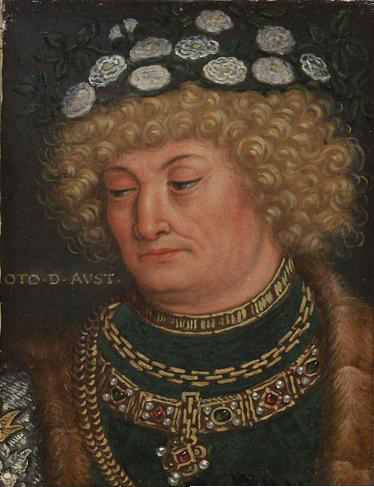
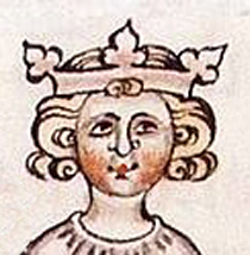

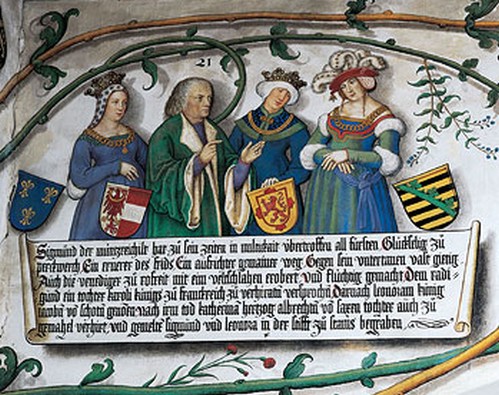






O.jpg)






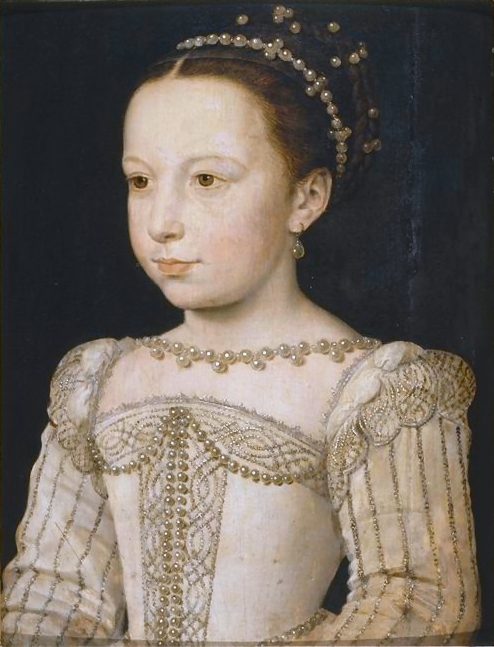
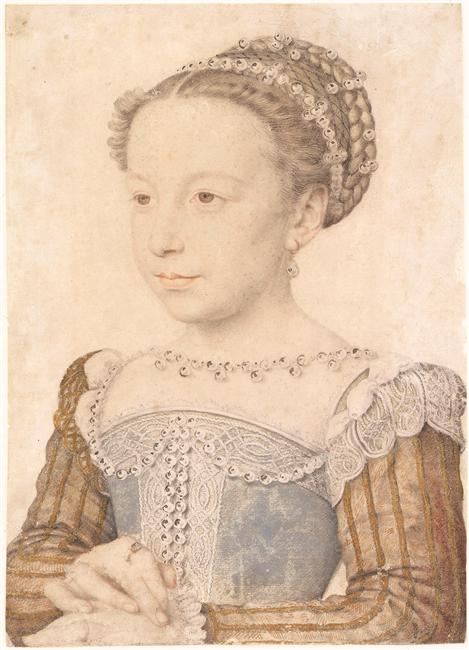





_by_Nicholas_Hilliard.jpg/615px-Marguerite_of_Valois%2C_Queen_of_Navarre)_by_Nicholas_Hilliard.jpg)
